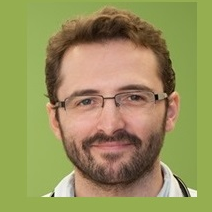The Infective Endocarditis
A special issue of Microorganisms (ISSN 2076-2607). This special issue belongs to the section "Medical Microbiology".
Deadline for manuscript submissions: 31 July 2024 | Viewed by 3615
Special Issue Editors
2. CIBERINFEC Investigator, Instituto de Salud Carlos III, Madrid, Spain
Interests: infective endocarditis
Special Issue Information
Dear Colleagues,
Cardiovascular infections are life-threatening diseases with high morbidity and mortality, despite the advances in diagnosis, antimicrobial therapy and the role of cardiac surgery. Infective endocarditis (IE) is the most severe cardiovascular infection and is a constantly changing disease. In the next 10 years, IE will increase in the elderly population and patients with intracardiac devices (prosthetic valves, cardiac implantable electronic devices and TAVI) and in persons who inject drugs (PWID). Improving strategies of prevention in the community and in hospitals (bacteremia-zero protocols) is key for avoiding IE. The endocarditis team (IE Team) plays an important role in improving patients’ diagnoses and outcomes. Diagnoses will be faster and more accurate with the new molecular biology and nuclear medicine tools and neurological complications will be reduced with mechanical thrombectomy. Staphylococcal and enterococcal infections are the leading IE etiologies. Antibiotic treatment schema will change the initial IV induction phase followed by oral antibiotic consolidation. Surgery plays an important role in the curation of these infections, as it is needed in around 50% of cases. The new aims in the surgical field include improving indications and timing. Machine learning and AI can help us to achieve some of these goals. As stated before, IE remains a disease of high morbidity and mortality, with far-reaching effects on the quality of life of survivors. In addition, vascular graft infections and LVAD infections are increasing and their management is challenging.
For this Special Issue, we invite you to submit contributions on infective endocarditis and cardiovascular infections, including experimental models, epidemiology, genetic susceptibility, infection mechanisms, staphylococcal and enterococcal endocarditis, endocarditis in the elderly, in people with CIED and prosthetic valves and TAVI and in PWID and novel medical and surgical treatment strategies, vascular graft infections and LVAD infections.
Prof. Dr. Jose M. Miro
Dr. Guillermo Cuervo
Guest Editors
Manuscript Submission Information
Manuscripts should be submitted online at www.mdpi.com by registering and logging in to this website. Once you are registered, click here to go to the submission form. Manuscripts can be submitted until the deadline. All submissions that pass pre-check are peer-reviewed. Accepted papers will be published continuously in the journal (as soon as accepted) and will be listed together on the special issue website. Research articles, review articles as well as short communications are invited. For planned papers, a title and short abstract (about 100 words) can be sent to the Editorial Office for announcement on this website.
Submitted manuscripts should not have been published previously, nor be under consideration for publication elsewhere (except conference proceedings papers). All manuscripts are thoroughly refereed through a single-blind peer-review process. A guide for authors and other relevant information for submission of manuscripts is available on the Instructions for Authors page. Microorganisms is an international peer-reviewed open access monthly journal published by MDPI.
Please visit the Instructions for Authors page before submitting a manuscript. The Article Processing Charge (APC) for publication in this open access journal is 2700 CHF (Swiss Francs). Submitted papers should be well formatted and use good English. Authors may use MDPI's English editing service prior to publication or during author revisions.
Keywords
- infective endocarditis (IE)
- native valve endocarditis
- TAVI endocarditis
- prosthetic valve endocarditis
- staphylococcal endocarditis
- enterococcal endocarditis
- molecular biology diagnosis
- cardiac PET/CT diagnosis
- vascular graft infections
- LVAD infections
- endocarditis in the elderly
- endocarditis in PWID
- oral antimicrobial treatment of IE
- cardiac surgery of IE
- cardiovascular infections
- cardiac implantable electronic device (CIED)-IE







